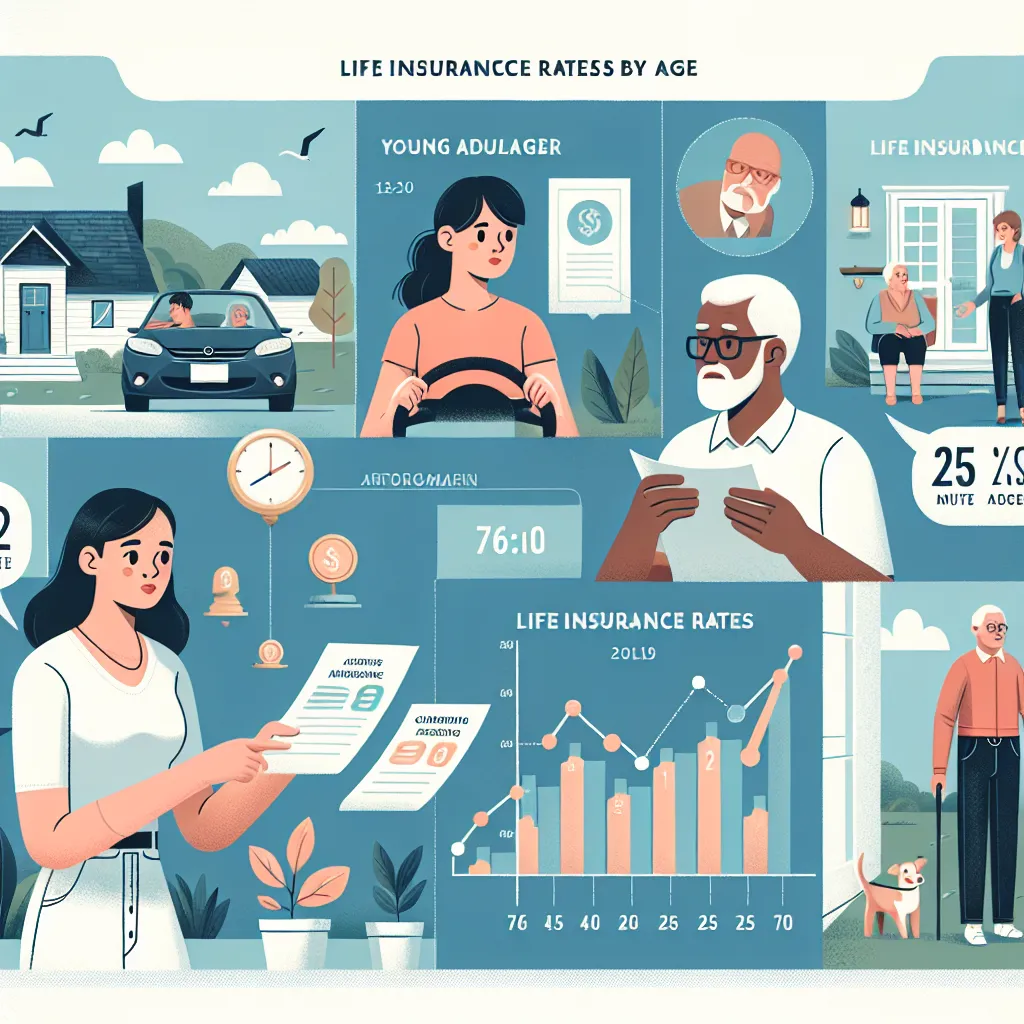Understanding Life Insurance Rates By Age
Understanding Life Insurance Rates By Age
Life insurance is an important financial tool that provides protection and financial security to your loved ones in the event of your untimely demise. It ensures that your family is financially supported, even when you are no longer around to provide for them.

When considering life insurance, it is essential to understand how your age can impact your life insurance rates. Insurance premiums are typically based on various factors, including age, gender, health condition, occupation, and lifestyle habits. Among these factors, age plays a significant role in determining life insurance rates.
Why Does Age Affect Life Insurance Rates?
Age is a crucial factor for insurance companies when calculating life insurance rates. The likelihood of experiencing health issues or passing away increases as we age, making life insurance riskier for older individuals. Therefore, insurance companies adjust their rates based on age to reflect the higher risk associated with older policyholders.
Typically, life insurance rates increase as you get older. This is because the older you are, the closer you are to your average life expectancy. Insurance companies use actuarial tables and statistical data to determine the average life expectancy for various age groups. As you approach your life expectancy, the risk of the insurance company paying out the policy increases, which leads to higher premiums.
Let’s explore how life insurance rates can vary based on different age groups:
Life Insurance Rates in Your 20s
Young adults in their 20s are generally considered to be in good health and have a lower likelihood of experiencing severe health issues. As a result, life insurance rates for this age group tend to be the most affordable.
Insurance companies view young adults as lower risk because they have a longer life expectancy, fewer pre-existing health conditions, and lower chances of engaging in risky behaviors. Additionally, individuals in their 20s often have fewer financial obligations, such as mortgages or dependents, which can also contribute to lower insurance rates.
Life Insurance Rates in Your 30s and 40s
Once you enter your 30s and 40s, life insurance rates may start to increase gradually. This is because as you age, the probability of developing health issues or experiencing unexpected medical conditions rises. Insurance companies consider these factors when determining your premiums.
Moreover, in your 30s and 40s, you may have additional responsibilities, such as starting a family or taking on a mortgage. These obligations often require higher coverage amounts, which can lead to higher premiums. However, it’s important to note that rates in this age group are still relatively affordable compared to older age brackets.
Life Insurance Rates in Your 50s and Beyond
Life insurance rates typically increase significantly once you reach your 50s and beyond. This is primarily due to the higher risks associated with age-related health conditions and the proximity to average life expectancy.
Insurance companies consider factors such as high blood pressure, diabetes, and other age-related health issues that become more prevalent in older age groups. Furthermore, the probability of mortality increases, making life insurance riskier for the insurer.
Additionally, individuals in this age group are more likely to have accumulated substantial financial obligations, such as paying off mortgages and supporting children through college. These financial responsibilities often require higher coverage amounts, resulting in higher premiums.
How to Secure Affordable Life Insurance Rates
While life insurance rates increase with age, several strategies can help you secure more affordable premiums:
1. Start Early
The best time to secure life insurance at lower rates is when you are young and healthy. By purchasing life insurance in your 20s or early 30s, you can lock in lower premium rates for a longer duration.
2. Maintain Good Health
Living a healthy lifestyle can significantly impact your life insurance rates. Regular exercise, a balanced diet, and avoiding tobacco or excessive alcohol consumption can help keep your premiums affordable.
3. Comparison Shop
Don’t settle for the first life insurance policy you come across. Shop around and compare quotes from multiple insurance companies to find the most competitive rates that suit your needs.
4. Consider Term Life Insurance
Term life insurance provides coverage for a specific period, such as 10, 20, or 30 years. It tends to have lower premiums compared to permanent life insurance policies. If you only need coverage for a specific timeframe, term life insurance may be a more cost-effective option.
5. Work with an Independent Insurance Agent
Seeking guidance from an independent insurance agent can be beneficial in finding the best life insurance rates. They can compare policies from multiple insurers and provide expert advice tailored to your specific situation.
Conclusion
Understanding how age affects life insurance rates is crucial when planning for your financial future. As you age, life insurance rates tend to increase due to higher risks associated with health conditions and mortality.
Starting early, maintaining good health, comparison shopping, considering term life insurance, and seeking guidance from an independent insurance agent are effective strategies to secure more affordable life insurance rates.
Remember, life insurance provides peace of mind and financial security for your loved ones. By understanding the impact of age on life insurance rates, you can make informed decisions to protect your family’s future.
